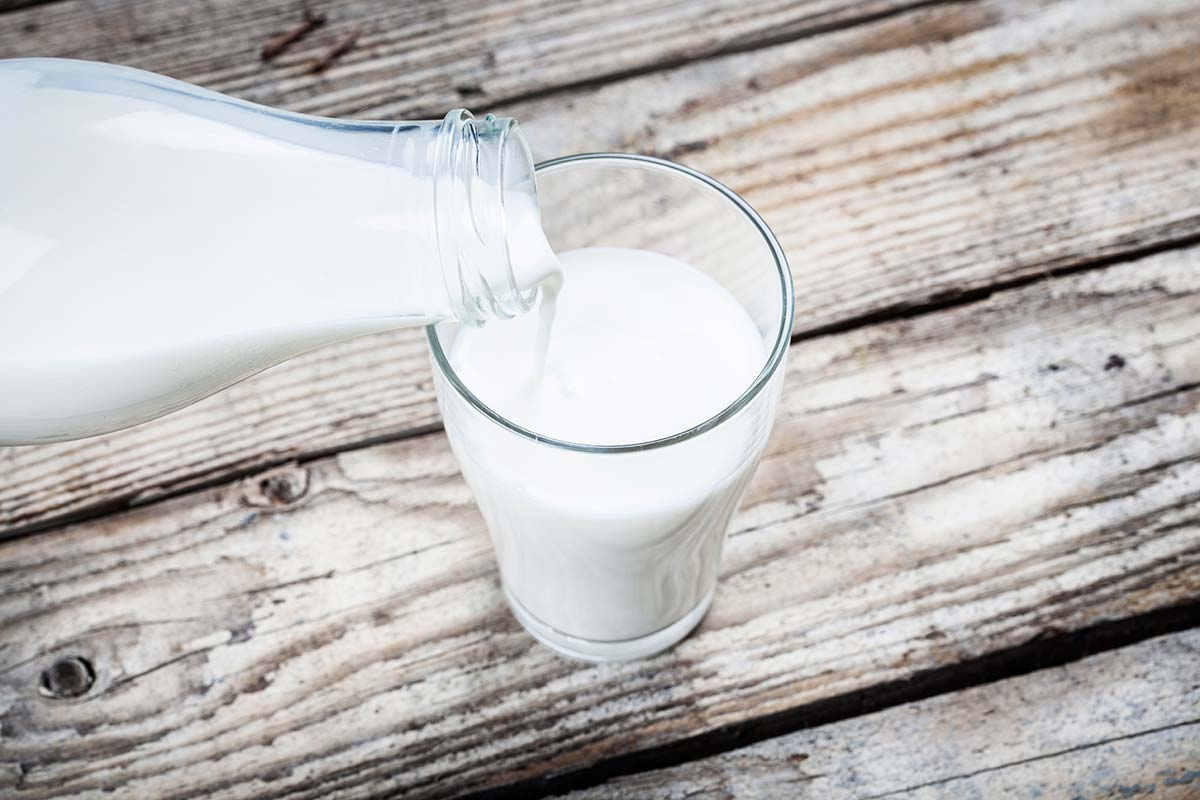Wellness Tips from Bon Appétit: The Skinny on Skim Dairy
- by bonappetit

I’ve been hearing more and more that we should be eating full-fat dairy. Is this true — should I be fattening up my choices? What about all that saturated fat?
Full-fat yogurts filling supermarket shelves, fitness icons “Instagramming” whole milk lattés, and “health” foodies spotted indulging in rich and creamy cheese plates — could these be signs of changing times for dairy? While the 2015 Dietary Guidelines for Americans and the American Heart Association still recommend low-fat dairy as the best choice, some health professionals are beginning to question those guidelines. But, don’t reach for that tub of ice cream just yet!
However, research over the last few years suggests that dairy fat may not be as bad for us we once thought. In fact, full-fat dairy may even help with weight management.
It’s long been recommended that eating low-fat dairy products will reduce saturated fat in one’s diet and therefore reduce risk cardiovascular disease, diabetes, and even weight gain. However, research over the last few years suggests that dairy fat may not be as bad for us we once thought. In fact, full-fat dairy may even help with weight management.
It’s unclear, however, how much full-fat dairy is beneficial since there is a large variation in what is considered “high,” “middle,” and “low” consumption across studies. Moderate to high-fat diets can all work for weight management when there is a calorie deficit, so the argument is plausible that full-fat dairy provides satiety and can be part of this. Some researchers also hypothesize that dairy fat is metabolized differently than other saturated fat, though this hasn’t been proven. These studies are primarily based on survey data, which relies on self-reporting and may not be reliable. In addition, we don’t know if in these studies full-fat dairy replaced less healthy items — like refined carbohydrates — or if the people who eat low-fat dairy also eat a lot of questionable “diet” foods in their unsuccessful attempts to lose weight.
The connection between dairy and cardiovascular disease and diabetes is inconsistent across the research, primarily due to study design. As in the weight management studies, the definition of high and low dairy consumption varies, as does what foods are included. For example, some studies include prepared foods that include dairy (such as pizza); others focus only on milk; or include milk, cheese and yogurt, but not butter and ice cream. One analysis of 18 studies suggests that eating yogurt, milk, and cheese does not contribute to cardiovascular disease. Another didn’t find a strong correlation (positive or negative) between dairy and cardiovascular disease, but the authors question the validity of many of the source studies involved. As the Center for Science in the Public Interest points out, many of studies are flawed and they are misrepresented in the media. Additionally, some studies are funded or conducted by the dairy industry, which may introduce a bias to the study design or results.
What’s often missed in the discussion is what dairy fat is replacing. For example, replacing a full- or two percent-fat yogurt with a flavored, high-sugar, yet fat-free yogurt or a cup of whole milk with a skim chocolate milk (or non-dairy sugary beverage) doesn’t provide any benefit — aside from possibly saving a small amount of calories. Both also introduce more sugar into the diet, which has been tied to weight gain and other health concerns.
However, although calories are similar, cooking with olive oil instead of butter not only reduces the saturated fat in the diet, but also offers known heart-healthy fats and other plant nutrients, which have been tied to reduced inflammation and lower risk of CVD. Experts Marion Nestle from New York University and Frank Hu from the Harvard School of Public Health offer good perspective, noting that we should be talking less about individual nutrients and more about whole foods.
So, when deciding whether to enjoy that ice cream cone or full-fat yogurt, consider your whole diet and how those additional calories and saturated fat fit into your day. Keep in mind that saturated fat should still be only five to seven percent of calories, and most full-fat dairy products are higher in calories than their low-fat counterparts. While some dairy fat can be part of a healthy diet, the emerging research is not license to eat unlimited pizza or drown everything you make in butter.
At Bon Appétit, we know there’s a lot on your plate that you worry about. That’s why we have a team of registered dietitian nutritionists ready to answer your nutrition questions about which food choices will help you avoid unwanted pounds, work or study (and sleep!) better, and form long-lasting healthy eating habits. Email your questions and feedback to [email protected]